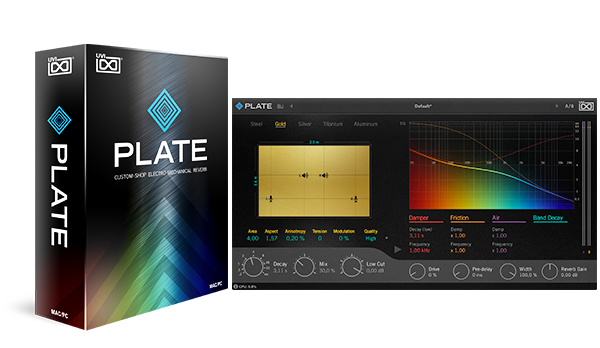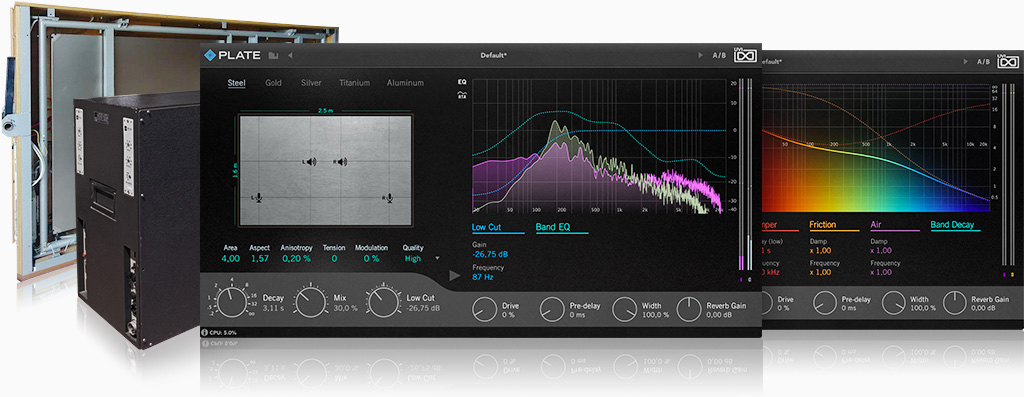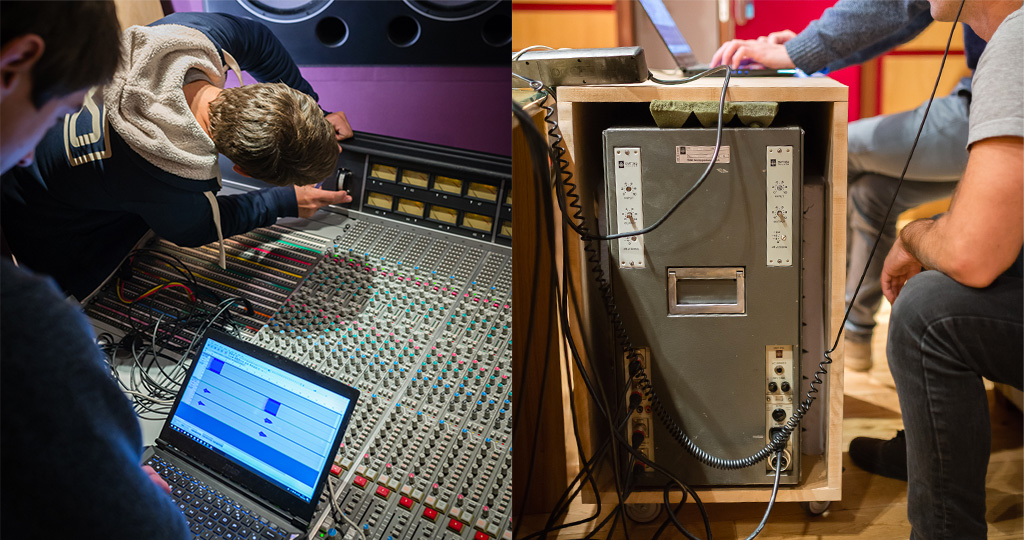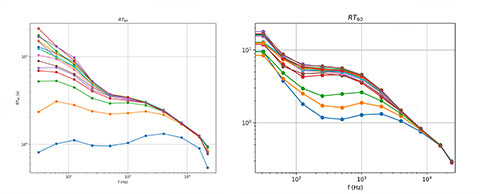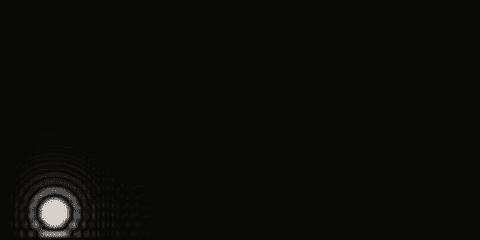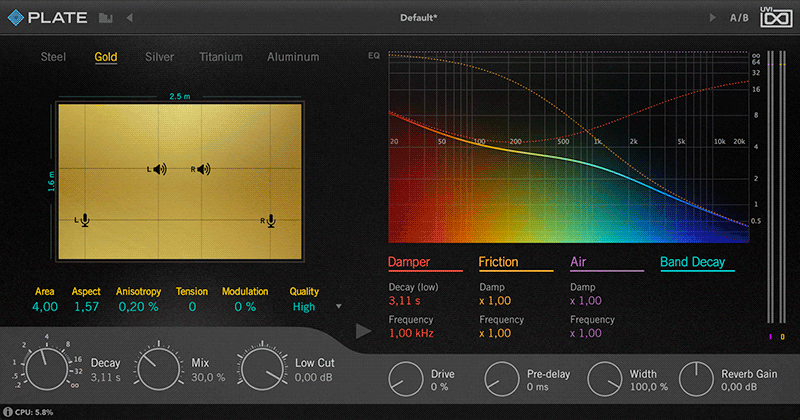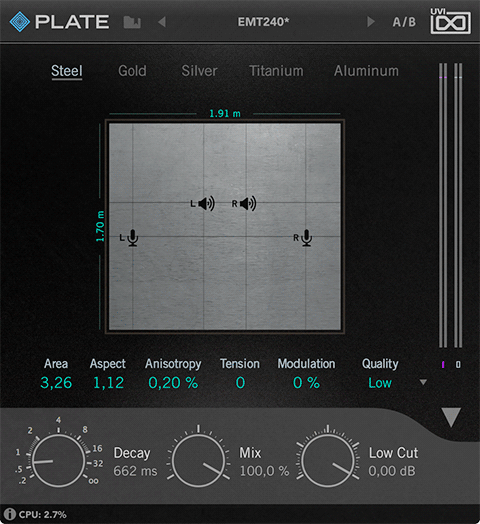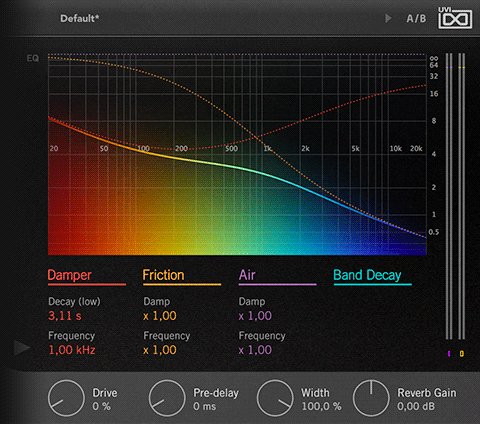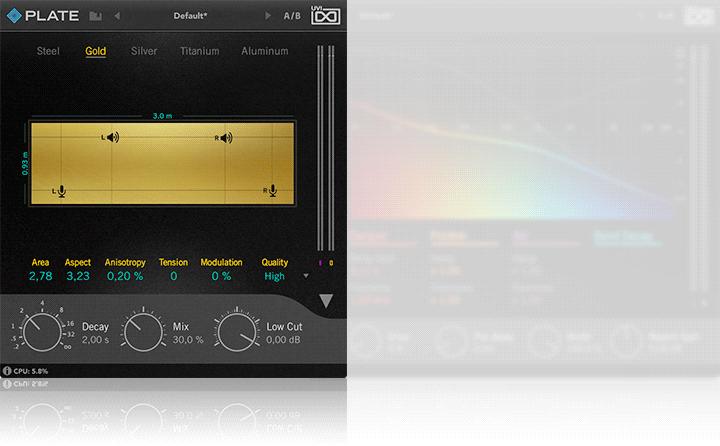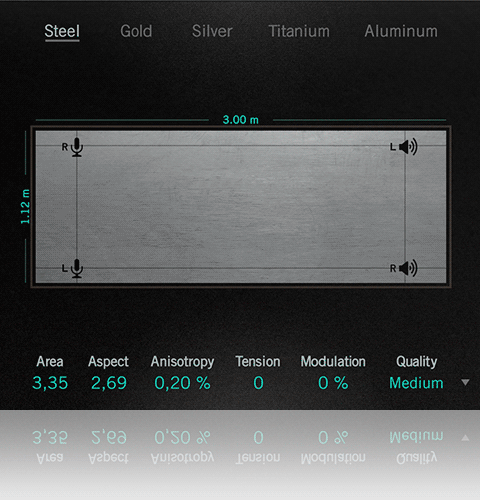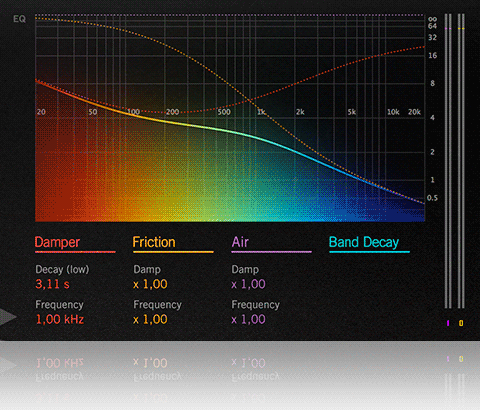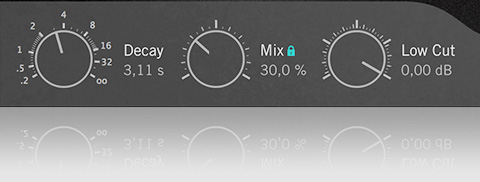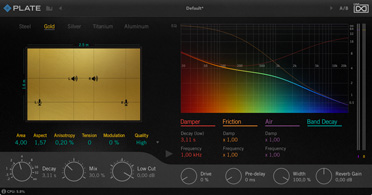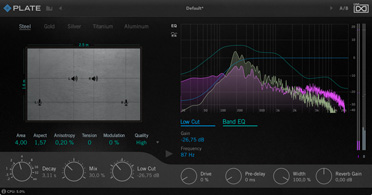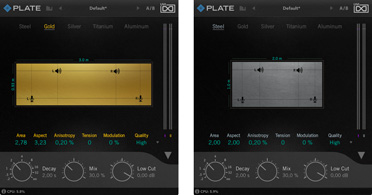OVERVIEW
Explore the deep and rich sound of plate reverb like never before with UVI Plate, an advanced physically-modeled reverb. Plate employs realtime physical-modeling with up to 20,000 modes to achieve new levels of depth and detail, going well beyond the limitation of physical units. Take complete control over your plate's material and dampening properties and explore a universe of reverb sounds from classics like the EMT140 and 240, and beyond.
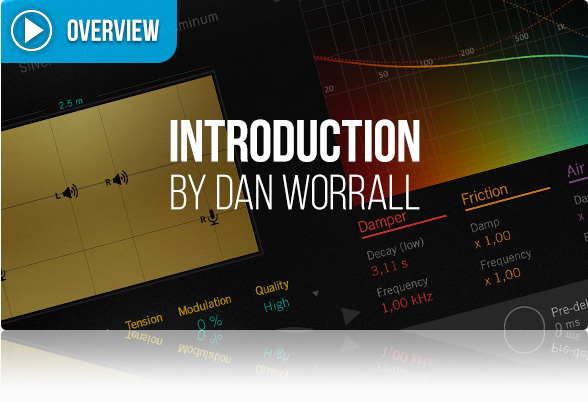
APPROACH
Our goal was not to clone a specific hardware reverb, but we wanted to replicate the sound of many hardware reverbs and allow users to experiment with their physical characteristics, even designing their own.
To reach this goal we’ve built an entire plate reverb system as a fully-parametric physical model. We approached it from the perspectives of both clinical science and musicality. Forming the models core on extensive mathematical research and then calibrating the results against detailed measurements made of an EMT140 and EMT240.
With Plate we simulate every component of the sound: dimensions, material, input/output positioning, modulation and decay sculpting while staying within the general sonic territory allowed by physics. In doing so we’re able to create a near-endless array of authentic plate reverb sound.
IN-DEPTH
Classic Plate and beyond
Plate delivers a fully-parametric physical model of electro-mechanical reverb, capable of dialing in sounds of specific physical units with uncanny precision or creating wholly-new reverbs ripe with sound design potential.
Physical modeling
Extensive modeling of real-world components gives you the ability to completely control the sound of your reverb. Choose from multiple types of metal sheet, adjust the plate size, manually position inputs and outputs on the plate, introduce irregularities and tension to the metal, then shape your decay with simulations of the physical dampener, thermo-elastic loss and air radiation. Built on science, tuned by musicians, Plate gives you total control over the sound of your favorite hardware units and freedom to create your own.
Visual Decay and EQ Editor
A beautiful graphical editor lets you interactively sculpt Plate’s decay and EQ sections. Freely adjust each elements’ frequency and contribution with complete confidence and see the results in real-time thanks to the built-in spectral analyzer. Plate’s decay and EQ sections are equipped with 3 modeled decay sections (damper, friction and air), octave-band decay, octave-band EQ, and a lowcut EQ, allowing you to create lush decays while easily taming problem frequencies, adjusting signal balance, or bringing out subtle details.
Fully-Featured
With precise modeling of many discrete components, a preamp saturation stage, predelay, parameter locks, wet/dry mix and a high-quality preset library filled with useful sounds, Plate’s been designed to provide you with a powerful and featured tool capable of achieving the characteristic sounds of classic hardware and unique sounds of your own design.
Maximum Fidelity
Plate is packed with serious sound potential. A variable 'Quality' control allows you to adjust Plate's performance based on the patch design and your production needs by changing the amount of modes (think of these like voices on a synth). The default setting provides a beautiful result in most cases, while increasing the quality can simulate up to 20,000 modes for the ultimate result, but is best suited for offline rendering. To help you achieve the best quality possible Plate has been highly-optimized to make use of the latest SIMD instruction sets available (SSE, AVX, AVX2), and uses adaptive multi-threaded, multi-core rendering in order to finish the rendering in the shortest amount of time independently of the current CPU load.
Easy of Use
Even with all the features, we've made sure that using Plate is a breeze thanks to a customizable user interface. The default 'Compact' mode is perfect for quickly browsing the included presets and dialing them in to suit your input material. Toggling the 'Expanded' view reveals additional controls including the visual decay editor where you can take full control over the nuts and bolts to precisely shape your reverbs sound.
Under The Hood
To better understand how to practically utilize the features of Plate let’s take a look at the components:
METAL PLATE
- I/0 POSITION: Both left and right inputs and outputs can be freely positioned on the metal plate. Greater distance between them results in dispersed transients akin to a spring reverb. Positioning near the edges results in a more thin, nasal sound. Positioning close to center results in a more full sound.
- MATERIAL: select Steel, Gold, Silver, Titanium or Aluminum, each type of metal has a dramatic effect on the decay, experiment with different types of source material
- AREA: from 0.3-6.0m (expressed in steel equivalent), larger values result in higher modal density
- ASPECT: from .05-20, a more square aspect creates an even sound, smaller and longer aspects result in metallic "chirped" transients similar to a spring reverb
- ANISOTROPY: from 0-1%, introduces small defects in the metal resulting in slight, variable detuning of the modes
- TENSION: from 0-2000, simulates tension applied to the metal plate, higher values raise the frequency of higher modes
DECAY
- DAMPER: from 200ms-infinity, the primary decay control simulates a rigid porous material pressed against the plate to reduce decay time
- FRICTION: multiplier, simulates thermo-elastic loss
- AIR: multiplier, simulates the decay effect of air radiation on the plate
Note: all dampening controls are fitted with sweepable cutoff frequencies allowing both natural and completely unnatural results
ADDITIONAL CONTROLS
- OCTAVE-BAND DECAY: adjust the RT60 decay time per octave-band
- OCTAVE-BAND EQ: sculpt your sound with an octave-band EQ
- LOWCUT EQ: a lowcut shelving filter, useful for taming boom and bass-heavy sounds
- PREDELAY: from 0ms-1s, delay the reverberated signal
- DRIVE: from 0-100%, applies a preamp saturation stage to the signal before hitting the plate
- MIX: from 0-100%, mix the wet/dry signal ratio
- QUALITY: allows you to adjust Plate's performance based on the patch design and your production needs by changing the amount of modes (think of these like voices on a synth). A setting of "Medium" provides a beautiful result in most cases, while a setting of "Insane" simulates 20,000 modes for the ultimate result, but is best suited for offline rendering.
Stunning Sound, Unmatched Control
Incredible on vocals, instruments and a powerful sound design tool, Plate delivers extraordinary versatility and a truly gorgeous sound.
